Social commerce is gaining more prominence than ever and this is because Social media is no longer a mere platform for networking. Today, it is redefining online selling with its advanced capabilities. A report by Statista anticipates that global sales made through social media platforms will total 3 trillion by the year 2026.
Social Commerce Meaning
It is the practice of selling products directly through social media sites like Facebook, Instagram, and Twitter. With social commerce, the whole purchasing process, from researching about products to making the purchase, takes place on social media.
Today social commerce is so relevant that you don’t have an escape from it. Whenever you open Instagram, you get that reel or story highlighting a product based on your search history.
Social commerce combines marketing and retail channels into a single dynamic world since consumers discover and purchase things in the same medium. Social commerce allows you to put certain, ready-to-buy things in front of selected individuals who would enjoy them in a manner that traditional e-commerce and marketing cannot.
How does Social Commerce work?
Nearly 26% of internet users between the age group of 16 to 64 said that their primary motivation for accessing social media was to find things they could buy. Social commerce is creating a radical shift in how customers experience purchasing.
For instance, if you are selling a skin care product, an influencer can take them through their skincare routine to promote your products, which enhances the credibility of your product. Also, the product can then be purchased by customers directly on the platform, whether it be YouTube Shopping, Instagram, or TikTok.
Fashion enthusiasts no longer need to wait for the most recent edition of a magazine to find out what is trending during a specific season; all the information is readily available on social media.
Brands can get inspired by companies currently utilizing social media channels to expand their e-commerce storefront to social media to increase sales. In this post, we’ll provide you with nine brilliant instances of social commerce that you can refer to for building an effective social commerce strategy.
9 Social commerce examples to inspire your business in 2024
Social commerce example #1: H&M
Hennes & Mauritz (H&M) was established in Sweden in 1947, and Nasdaq Stockholm serves as its corporate headquarters. The goal of this fast fashion retailer is to provide style and quality at competitive prices in a sustainable manner. H&M was one of the first clothing companies to invest in bridging the gap between social media and online purchasing. The brand’s social commerce strategy uses various social media platforms like Twitter and Instagram to promote its products.
On Twitter, they share the most current products in their store and provide a link to purchase them online. The company now links to the items featured in each post and promotes its newest fashions on the mobile app via Instagram shopping. According to Shuli Lowy, Marketing Director at Ping Mobile in New York, “H&M’s posts are part of a broader re-engagement strategy.” The images are clean, visually beautiful, and speak directly to the target audience.
Social commerce example #2: Mallows Beauty
Mallows Beauty is a skincare company launched in 2020. They saw immense growth over a span of a short period using TikTok. It started off with social-first content to promote brand awareness. However, it has further benefited from new social commerce capabilities in recent months. In particular, TikTok’s relationship with Shopify and its live shopping feature has allowed businesses to leverage existing product catalogs to build a mini storefront on TikTok.
Mallows Beauty, a D2C skincare company, uses Live-stream shopping to market to customers. The company claims that live streaming generates more revenue than its physical storefronts. Since its inception in 2020, the company has embraced social media to engage and grow its audience with genuine content.
Social commerce example #3: Air Jordan
Michael Jordan, a basketball legend, founded the Air Jordan shoe brand in 1985. It is a branch of the well-known shoe company NIKE. Since its creation, Air Jordan has expanded beyond its original purpose as a basketball sneaker to serve various purposes. It now has endorsement deals with 21 active NBA players who wear AIR Jordan. NIKE’s social commerce game is top-notch as it delivers products dedicated to a specific target segment. Nike used Snapchat to promote its Air Jordan sneakers during the NBA All-Star game. All customers within a certain radius of the court received texts offering them the option to participate in a unique launch deal. Snapchat uses augmented reality to provide the best customer experience to its clients.
With its social commerce strategy, Jordan generated enthusiasm among fans during the NBA event, and pre-release merchandise was rapidly sold out. Social media and retail have been used to increase interest in the sale and foster their dedicated community. The clients’ purchasing experience of the shoes becomes smooth.
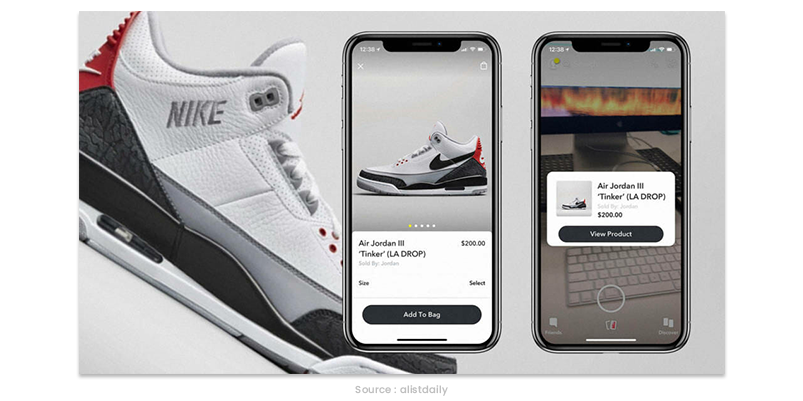
Social commerce example #4: Clinique
A division of the Estée Lauder Company in the United States, Clinique Laboratories produces skincare, cosmetics, toiletries, and perfumes. It is one of the most well-known businesses to embrace online purchasing on the Facebook ecosystem. They established a vibrant and engaging online storefront across various social media platforms. With its Facebook shop and shoppable Instagram posts, it promotes sales using product tags and captivating pictures. Clinique launched a live shopping event to promote an Instagram-exclusive set incorporating their iconic Almost Lipstick in Black Honey.
At the event, three Clinique Field Executives spoke on camera to discuss what they liked most about Black Honey, and each person applied the shade for viewers to observe how the item appeared on various skin tones. The product link was displayed on the screen so that users could later add it to their Instagram shopping baskets and make a purchase. According to Instagram, Clinique had a 7X quicker product launch activation time over the typical new launch activation period of 3 weeks.
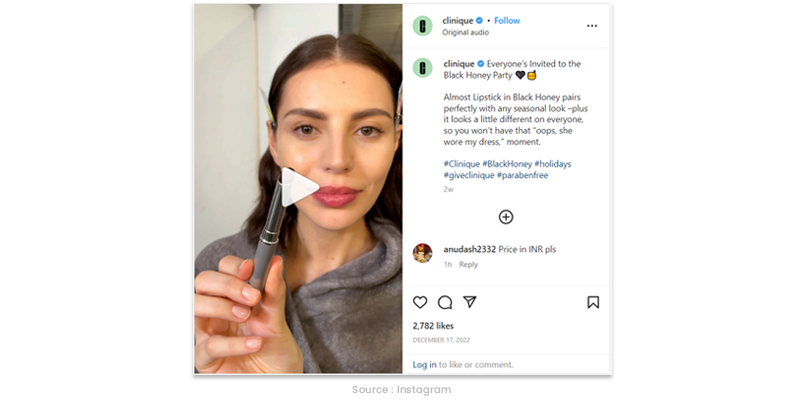
Social commerce example #5: Kylie Cosmetics
Kylie Cosmetics, founded by Kylie Jenner has a strong social media presence particularly on Instagram with a following of more than 25M as of December, 2023. Eighty-two percent of Kylie Cosmetics’ social media activity is on Instagram. They have a shopping option on their profile which opens up a variety of products across categories like babies and children, Beauty, Home, and Women.
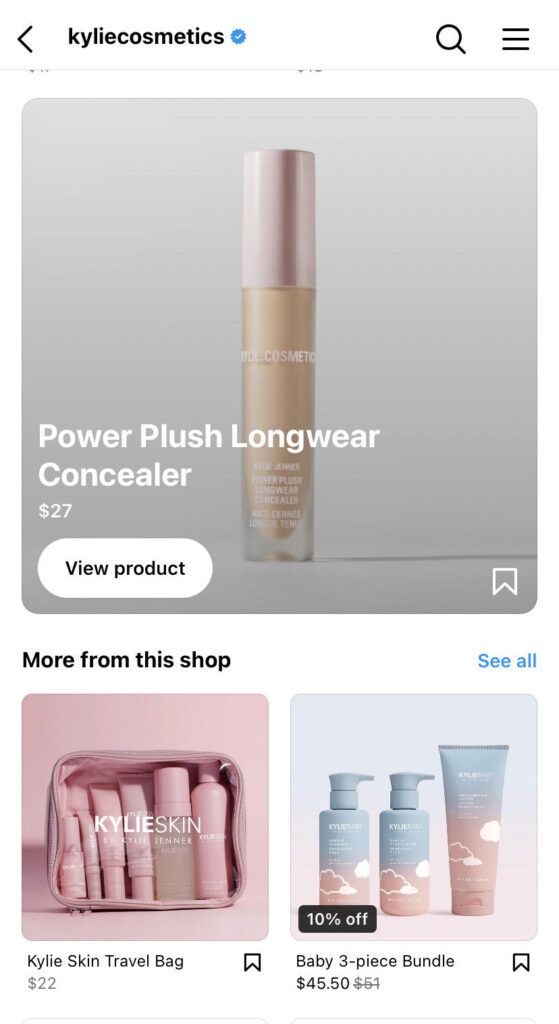
The product pages are comprehensive with a lot of product information, media assets, an option to visit the website, and more. The shopping page is not the only source for visitors to shop for products on Kylie Cosmetics’ Instagram page. The page has guides, filters, and other creative ways to sell their products.
Social commerce example #6: Sephora
Sephora is a global beauty retailer and is a popular brand among beauty enthusiasts. It is known for its extensive range of cosmetics, skincare, haircare, and fragrance products.
Known for its innovative beauty products and excellent customer service, Sephora is a go-to destination for beauty enthusiasts.
Sephora has a strong YouTube presence with a 1.4M subscribers. Their profile has the store option which allows users to shop directly from the social platform. They have a list of products in the store and to complete the purchase, users have to click on the store link to navigate to the official
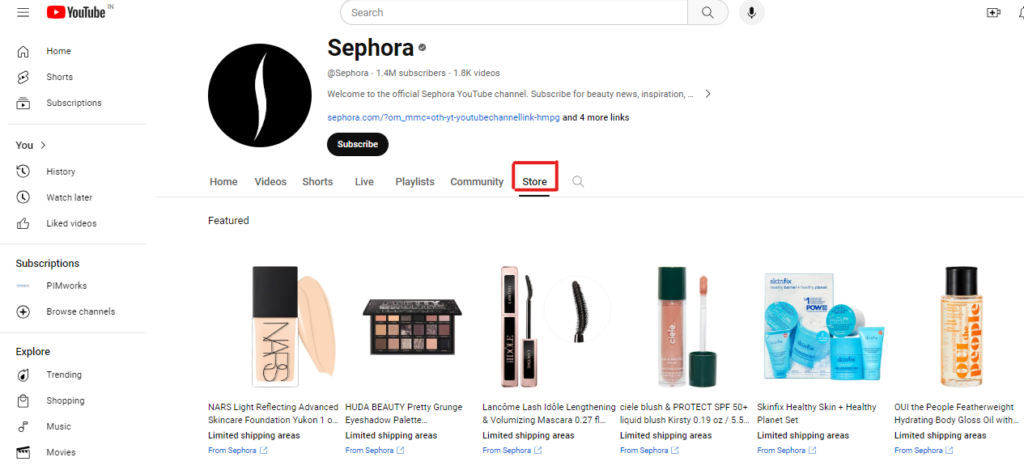
Social commerce example #7
According to an article on Insider Intelligence, Pinterest is looking to significantly shift from a discovery engine to more of a commerce platform. Platforms like Shopify allow you to connect your product catalogs to Pinterest to help buyers have more information and context.
Pinterest has a shopping option and when users click on the product, they will be taken to the product page that has information about the price and a direct link to the product page on the shopping website.
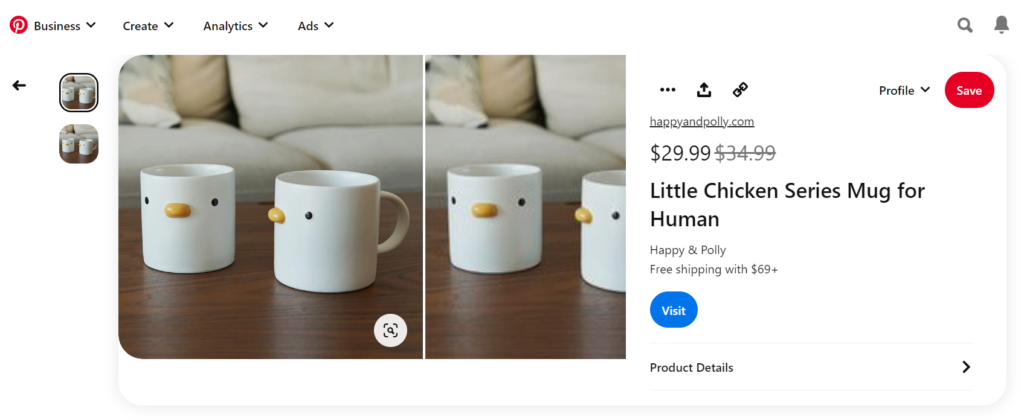
Source: Debutify
Social commerce example #8: IKEA
IKEA is a Sweden-based furniture brand and is one of the world’s largest and most well-known furniture retailers with customers across the globe. It is easy to assemble products that are unique and high in quality making them stand out. IKEA has a good social commerce presence across key social media channels.
Here is an example of how IKEA is selling its products by leveraging Facebook:

Social commerce example #9
Instagram, in addition to helping online businesses sell their products through posts, swipe-up links in stories, and ads on the feed; also allows users to make their ads appear in the explore pages.
These ads appear as images or short videos with a CTA link to the website. Here’s an example:

Final thoughts
Although social commerce is still in its inception stage, shopping is moving closer to the edge, and the momentum we saw is just the beginning. People are going crazy for the conformable user interface that social media provides. Businesses now are leveraging the endless potential of social media to give brands more visibility. The sooner businesses embrace this trend, the more they stand to gain from it.
FAQs
Social commerce combines social media and e-commerce, allowing businesses to sell directly through social platforms. In 2024, it’s crucial due to evolving consumer habits and the power of social influence.
Stay updated on emerging platforms, incorporate shoppable content, and engage with your audience authentically. Explore influencer collaborations for wider reach.
While social commerce is versatile, fashion, beauty, and lifestyle brands often see significant success. However, any industry can thrive with the right strategies tailored to its audience.
An excellent example of social commerce is the integration of Facebook Shops by a handmade jewelry brand. By setting up a shop on Facebook, the brand allows users to discover, explore, and purchase its products directly within the Facebook platform
Consider a clothing brand leveraging Instagram Shopping for social media e-commerce. The brand creates shoppable posts and stories on Instagram, showcasing its latest collection. Users can tap on the featured products, access detailed information, and make purchases—all without leaving the Instagram app.

![eCommerce PIM: A Comprehensive Guide [Meaning, Benefits, & Popular Tools] pim for ecommerce](https://www.pimworks.io/blog/wp-content/uploads/2023/12/image-10-370x245.png)


